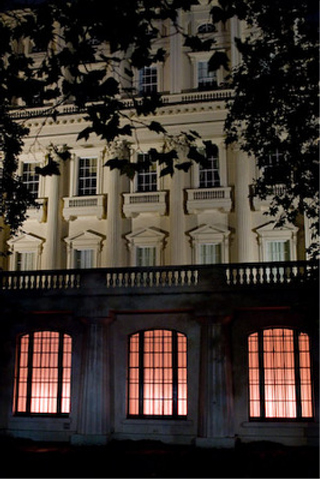In aptly eccentric fashion, the Institute of Contemporary Arts is celebrating its 60th anniversary in the year when it actually turns 61. The ICA was founded in 1947, an occasion marked by a rousing speech from Sir Herbert Read, its founding chairman - the gentleman-anarchist, poet, occasional Surrealist and all-round agent provocateur - in which he proclaimed it “an adult play-centre, a workshop where work is a joy, a source of vitality and daring experiment”.
Never an easy institution to define, it is an art gallery, a cinema, a music venue and a forum for seminars and discussions ranging across the whole gamut of culture. It also has a pretty good bar and restaurant (recently taken over by Oliver Peyton and restyled in psychedelic ceramic tiling) as well as an excellent, idiosyncratic bookshop.
Never an easy institution to define, it is an art gallery, a cinema, a music venue and a forum for seminars and discussions ranging across the whole gamut of culture. It also has a pretty good bar and restaurant (recently taken over by Oliver Peyton and restyled in psychedelic ceramic tiling) as well as an excellent, idiosyncratic bookshop.
Rather like an ageing rock star, the ICA is now facing the difficult challenge of growing old without subsiding into self-repetition. The task is not easy; the avant-garde's supposedly transgressive gesture has become as conventional a medium of expression as depictions of pneumatic nudes in classical fancy dress were in the 19th-century heyday of Bouguereau and Alma-Tadema. To make matters even more problematic, the newly academic avant-garde also has its new academy, in the looming form of Tate Modern - an institution that, back in the days of Read and his immediate successors, was all but unimaginable. In their time, the Tate meant the Tate Gallery on Millbank, pure and simple. It was a stuffy maiden aunt of a museum that could not begin to compete with the iconoclastic ICA, home to performance artists and live unstructured events, to sharp young men in Jean-Paul Sartre polo-necks, beat poets and hippies, and (later) enraged punk rockers and the melancholy Morrissey. Nowadays, it is Tate Modern that has the...


